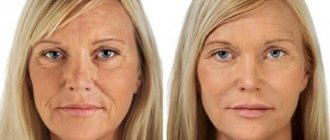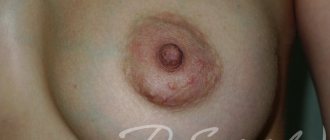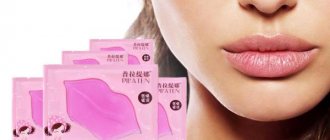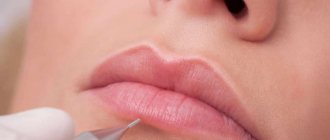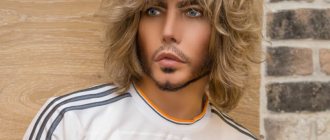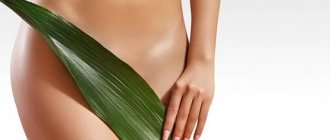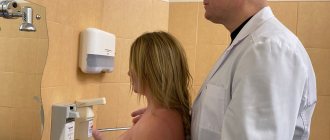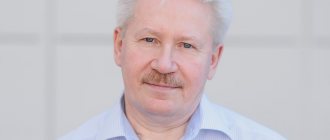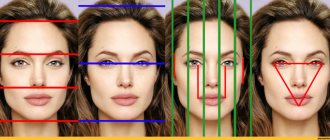Prokudin Sergey Vladimirovich
Plastic surgeon, Chairman of the Southern Society of Plastic Reconstructive Aesthetic Surgeons and Cosmetologists (YOPREH), member of the Council of the Society of Plastic Reconstructive Aesthetic Surgeons of Russia (OPREH), member of the European Association of Aesthetic Surgeons (ASSECE) and the Italian Society of Dermoesthetics and Aesthetic Surgery (SIDE).
Has been practicing plastic surgery since 1999.
Sergey Vladimirovich Prokudin received higher education at the State Medical University in Vladivostok. He completed an internship in general surgery and received his first surgical practice in the city hospital of Bataysk (Rostov region).
He studied a basic course in plastic, aesthetic and reconstructive surgery at the Scientific Center for Surgery of the Academy of Medical Sciences. Prokudin S.V. completed numerous advanced training courses in the following areas: mammoplasty, abdominoplasty, surgical facial rejuvenation, rhinoplasty, otoplasty, liposuction, phlebology, endoscopic surgery, cardiovascular surgery, and the use of Botox. Certified in maxillofacial surgery at the St. Petersburg Medical Academy of Postgraduate Education of the Federal Agency for Health and Social Development.
Currently, plastic surgeon Sergey Vladimirovich Prokudin accepts patients in the diagnostic and treatment department. Performs a wide range of aesthetic surgeries on the face and body, as well as injection cosmetic procedures.
Clinic:
- Institute of Plastic Surgery and Cosmetology (IPHIK) Plastic Surgery Clinic
- Medical Department of Plastic Surgery and Cosmetology
Prices for services:
| Plastic surgery | ||
| Face-to-face consultation | 500 — 5.000 rub. | |
| Abdominoplasty | 60.500 rub. | With liposuction. |
| Mini abdominoplasty | 68.400 — 102.960 rub. | |
| Blepharoplasty | 18.500 — 56.880 rub. | |
| Asian eyelid surgery | 28.500 rub. | |
| Canthoplasty, canthopexy | 22.320 — 36.720 rub. | |
| Brachioplasty | 36.720 — 54.000 rub. | |
| Gynecomastia in men (treatment) | 12.500 — 74.160 rub. | One-sided - two-sided. |
| Gluteoplasty (buttock surgery) | 59.760 — 137.520 rub. | Without the cost of implants. |
| Intimate plastic surgery | ||
| Hymenoplasty | 18.000 — 47.450 rub. | |
| Labiaplasty | 9.500 — 48.240 rub. | |
| Clitoral plastic surgery | 32.500 rub. | |
| Cruroplasty (shin surgery) | 68.400 — 111.600 rub. | Without the cost of endoprostheses. |
| Scar treatment (surgical) | 12.500 — 39.600 rub. | |
| Liposuction | 15.500 — 94.320 rub. | |
| Lipofilling | 11.000 — 102.960 rub. | |
| Mentoplasty | 36.720 — 62.640 rub. | Without material cost. |
| Otoplasty | 12.500 — 45.360 rub. | Restoration of the auricle RUB 39,600. — 82,800 rub. |
| Earlobe plastic surgery | 6.500 — 20.880 rub. | |
| Hair transplantation | 54.000 — 111.600 rub. | |
| Cheek surgery | 45.360 — 62.640 rub. | Without material cost. |
| Platysmoplasty | 20.500 — 39.500 rub. | |
| Breast lift (mastopexy) | 79.920 — 137.520 rub. | |
| Thigh lift | 71.280 — 108.720 rub. | |
| Facelift | 56.880 — 98.500 rub. | |
| Circular lift, SMAS | 59.760 — 105.840 rub. | |
| Forehead and eyebrow lift | 21.500 — 32.500 rub. | |
| Thread lift | 15.500 — 65.520 rub. | Without the cost of threads. 1 pair of Silhouette Soft threads - 13,000 - 54,000 rub. |
| Check-lifting | 59.760 — 94.320 rub. | |
| Endoscopic lift | 39.600 — 108.720 rub. | |
| Butt lift | 54.000 — 126.000 rub. | Including thread (without the cost of threads). |
| Rhinoplasty | 37.500 — 43.500 rub. | |
| Plastic surgery of the tip of the nose | 22.320 — 85.680 rub. | |
| Revision rhinoplasty | 26.500 — 51.500 rub. | |
| Septoplasty | 25.200 — 48.240 rub. | |
| Removing Bisha's lumps | 34.560 — 69.120 rub. | |
| Breast augmentation | 30.500 — 146.160 rub. | Without the cost of implants, if used. Including lipofilling. One-sided - two-sided. |
| Correction of nipples and areolas | 16.560 — 42.480 rub. | |
| Breast reconstruction | 108.720 — 200.880 rub. | Using an expander and an endoprosthesis. |
| Umbilicoplasty (navel surgery) | 28.080 — 45.360 rub. | |
| Breast reduction | 51.120 — 151.920 rub. | |
| Cheiloplasty | 19.440 — 36.720 rub. | |
| Cosmetology | ||
| Biorevitalization | ||
| IAL System | 11.000 rub. | 1 ml. Duo. |
| ACP | 8.000 rub. | |
| Teosial Redensity | 8.000 rub. | 1 ml. |
| Restylane | ||
| Vital | 9.000 rub. | |
| Vital Light | 7.000 rub. | |
| Botulinum toxin | ||
| Botox (1 unit) | 432 rub. | |
| Dysport (1 unit) | 80 rub. | |
| Treatment of hyperhidrosis | 15.000 — 18.000 rub. | With the cost of the drug. Liposuction of the axillary areas RUR 39,600 — 51.120 rub. |
| Contour plastic | ||
| Radiesse | 9.000 — 24.000 rub. | 0.3 ml - 1.5 ml. |
| Surgiderm | ||
| 30 | 16.560 — 22.320 rub. | 0.8 ml. |
| 30XP | 18.000 — 23.760 rub. | 0.8 ml. |
| Juvederm | ||
| Volift | 15.000 rub. | |
| Hydrate | 10.500 rub. | 1.0 ml. |
| Volbella | 15.000 rub. | 1 syringe - 1 ml. |
| Voluma | 16.000 — 45.360 rub. | 1 - 2 ml. |
| Ultra-2 | 8.000 — 19.920 rub. | 1 syringe - 0.55 ml. |
| Ultra-3 | 9.000 — 22.320 rub. | 1 syringe 0.55 ml - 0.8 ml. |
| Ultra-4 | 14.000 — 15.000 rub. | 1 syringe - 0.8 ml. |
| Ultra Smile | 11.000 rub. | 0.55 ml. |
| Plasmolifting | 19.440 — 30.960 rub. | |
| Removal of tumors | 500 — 36.720 rub. |
Biography of Sergei Prokudin-Gorsky
Sergei Prokudin-Gorsky is a pioneer of color photography, who captured Russia at the beginning of the last century in color for posterity.
Photographer and scientist, inventor and public figure, a man who was significantly ahead of his time. Sergei Mikhailovich Prokudin-Gorsky was born on August 18 (30 according to the new style) 1863 and left behind more than two and a half thousand color photographs, looking at which you cannot say that they were taken more than a hundred years ago.
He photographed landscapes and landmarks of Tsarist Russia, famous personalities, meteor showers and solar eclipses; Emperor Nicholas II himself was impressed by his work. An extensive collection of his works is now housed in the US Library of Congress and is available in digitized form to everyone.
A pioneer of digital photography in Russia, Sergei Mikhailovich Prokudin-Gorsky came from an old noble family. According to legend, the founder of the house was a Tatar prince who converted to Orthodoxy and fought on the side of Dmitry Donskoy in the Battle of Kulikovo. The Prokudin-Gorsky family included soldiers, diplomats, and writers.
The son of Mikhail Prokudin-Gorsky was born on the family estate, attended the Alexander Lyceum, and later attended lectures at St. Petersburg University. According to some information, he studied with Dmitry Ivanovich Mendeleev (he was in charge of a laboratory at the university at that time). However, for some reason, Sergei left the university and studied for some time at the Imperial Military Medical Academy (which he also did not graduate from).
Among his interests were painting and music - one of his biographers says that in his youth the future photographer was seriously involved in playing the violin, but due to a hand injury he received in a chemical laboratory, he was forced to give it up.
In 1890, Sergei began to engage in government activities, namely, he entered the service of the House of Charity for Workers, which was later transformed into a women's commercial school. In the same year, he married Anna Lavrova, whose father was involved in metallurgy and headed a partnership of specialized factories.
For some time, Prokudin-Gorsky studied chemistry, and was even a member of the chemical-technological department of the Imperial Russian Technical Society. But he soon became interested in photography and in 1898 he joined the photographic department of the IRTS. Perhaps it was then that he began to think about creating color photography.
In 1901, he opened his own photographic workshop in St. Petersburg, and then even headed the specialized magazine “Amateur Photographer”. A year later, he was already working in Germany, in Charlottenburg, under the guidance of Professor Adolf Mithe, who developed his own camera for color photography. In 1903, Sergei Mikhailovich was again in Russia and began printing postcards and illustrations on equipment made to his order in Germany. Moreover, he developed his own recipe for an emulsion that gave the best color rendition for its time.
Around the same time, he first traveled around the country to capture its sights and nature in color. In April 1904 he visited the Dagestan mountains, in the summer - on the Black Sea coast, then - in the Kursk province.
In 1905, his project - photographing Russia in color and publishing photographs in the form of color postcards - began to be financed by the St. Petersburg Red Cross. And previously strapped for funds, Prokudin-Gorsky continued his trips, photographing St. Petersburg, Kyiv, Sevastopol, Crimea, Novorossiysk.
But due to economic problems in the state, the institution was unable to pay for the photographer’s work. Sergei Mikhailovich had to give up expeditions for a while and engage in social activities. During this period, he ran his workshop, worked on a photo magazine, taught, participated in photo exhibitions and scientific congresses, and traveled to Europe, where he took a series of color photographs of Italy. At the end of 1906 - beginning of 1907, he, together with the expedition of the Russian Geographical Society (which he joined in 1900), visited Turkestan to capture a solar eclipse.
In 1908, Prokudin-Gorsky worked in Yasnaya Polyana, photographing 80-year-old Leo Tolstoy and his estate. Photographs of the famous writer and landscapes of the Tula region were printed in the form of postcards and, as they would be called now, posters. They were distributed throughout the country and brought wide fame to the photographer. Soon he received an audience with Emperor Nicholas II himself, who supported his long-standing idea of photographing the views and sights of Russia. The footage was supposed to be used in schools to introduce children to all corners of the big homeland.
The Tsar gave permission to work and provided transport; A few days later, the photographer went on an expedition again. He photographed the Volga and the Urals, Kostroma and Yaroslavl, then the Trans-Caspian region, again Turkestan, the Caucasus, Ryazan, Suzdal... But the project was never brought to life, most likely due to financial problems, since the state only paid transportation costs.
Probably in order to improve the shaky financial situation and raise capital for further work, since 1913 Sergei Mikhailovich seriously engaged in entrepreneurial activity, attracting large investors. He joined the board of the Biochrome joint-stock company created in 1914, which provided color photography and photo printing services.
In parallel with this, he began work on creating color cinema and even received a patent for it. All the necessary equipment was constructed, but then the First World War broke out. Prokudin-Gorsky had to abandon his endeavor and begin training pilots in aerial photography. He returned to photography again, but in wartime conditions this activity did not bring much success.
And then there was the October Revolution. In the new state, the photographer continued his active work to popularize photography and organized shows of his works in the Winter Palace. His workshop operated as a printing house and received orders from the Soviet authorities. In 1918, Sergei Mikhailovich, on behalf of the People's Commissariat of Education, went to Norway, where he was supposed to purchase projection equipment for schools.
But the civil war did not allow him to return home. He was forced into exile, separated from his family. First in Norway, then in England, Prokudin-Gorsky continued to work on creating color cinema, but faced great difficulties and competition. In the 1920s, he moved to France, where he was finally able to reunite with his children. His first marriage broke up, and in 1920 he married again, to his employee Maria Shchedrina.
After the failure with cinema, Sergei Mikhailovich returned to photography, gave lectures on photography, organized shows of his works (most of the collection was taken out of Russia) for fellow emigrants, and wrote memoirs.
He died in 1944, shortly after the Allies liberated Paris, and was buried in a Russian cemetery outside the French capital. In 1948, his collection was purchased from the heirs of Prokudin-Gorsky by the Library of Congress. In 2001, these works were digitized and made publicly available - the legacy of the pioneer of color photography is now open to the whole world.
